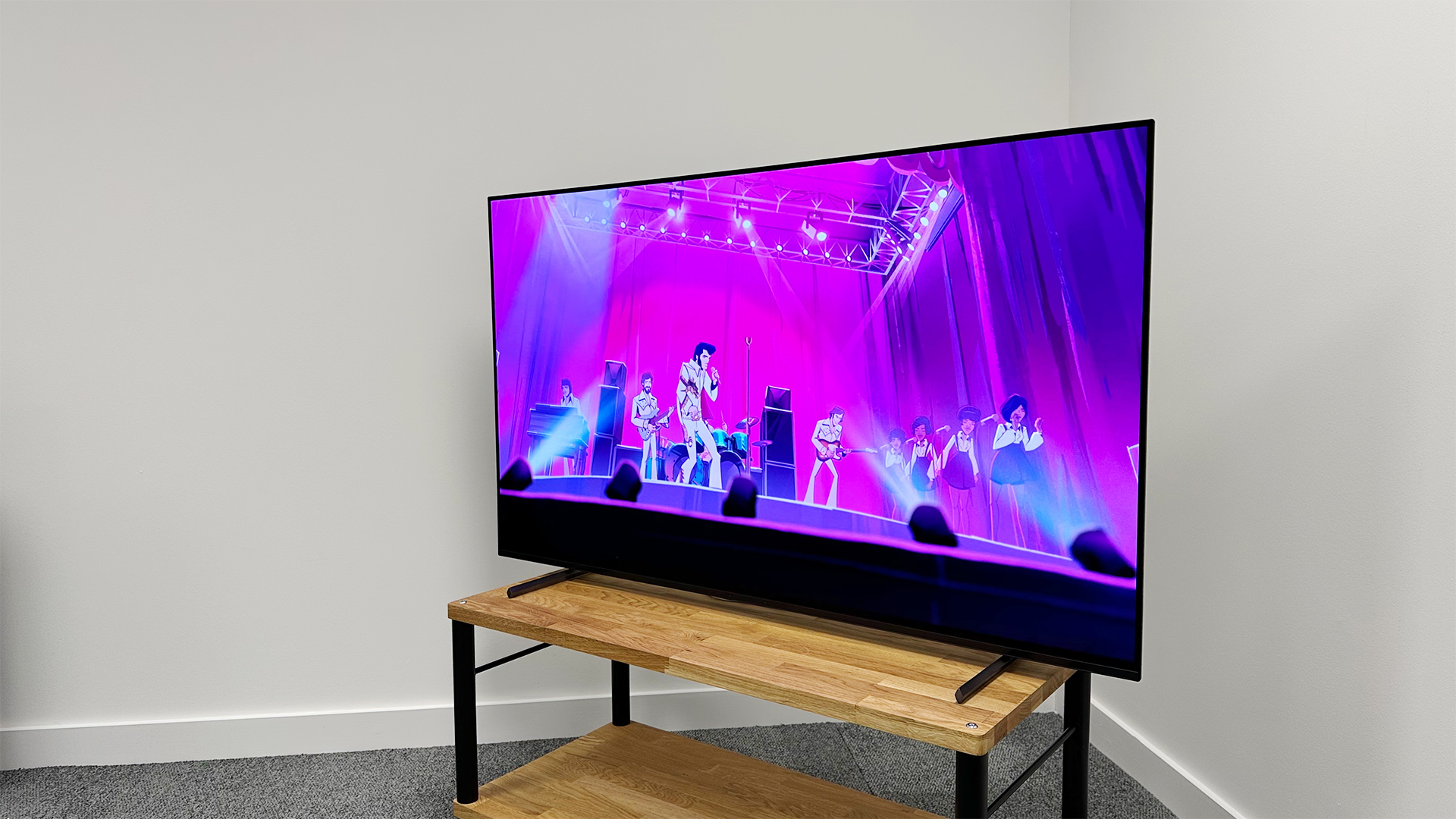
While all of the OLED attention may well be focused on the super-bright new MLA and QD-OLED models, the truth is that they’re prohibitively expensive right now, and the vast majority of OLED TVs sold this year will be step-down models such as the Sony A80L that we have before us today.
Price
Not that this is a terribly cheap TV, mind. The only price so far confirmed for the XR-55A80L is the £2399 UK price, which works out at around $2980 / AU$4430 – though official US and Australian pricing will likely be lower than this.
Also available in the UK is a variant called the A84L, which is priced the same as the A80L but has a few small upgrades – a metal rather than plastic remote, some extra Bravia Core credits (more on those below), and a Rich Colour Enhancer that boosts colours slightly, but only in the Vivid mode, which is best avoided anyway. Because the A80L and A84L are identical in almost every way, this review can be considered applicable to both.
That £2399 price makes the A80L/A84L significantly more expensive than the 55-inch LG C3, which launched at a price of £2099 / $1900 (around AU$3880). In fact, it’s not much more affordable than the 55-inch LG G3, which nominally comes in at £2599 / $2500 (around AU$4800) and does feature a new brightness-boosting MLA panel.
Sony would likely point to the fact that the A80L boasts a fancy actuator-based audio system that those LGs do not, and that while it doesn’t have the G3’s MLA tech, it does have unique heat mapping software that's designed to optimise the panel for increased brightness – though obviously not to the same level as an MLA OLED.
Sony would also likely say that it’s not purely about the raw materials, but how you use them and, having now put the A80L through our extensive, comparative testing process, that’s a sentiment we can wholly get behind.
Design
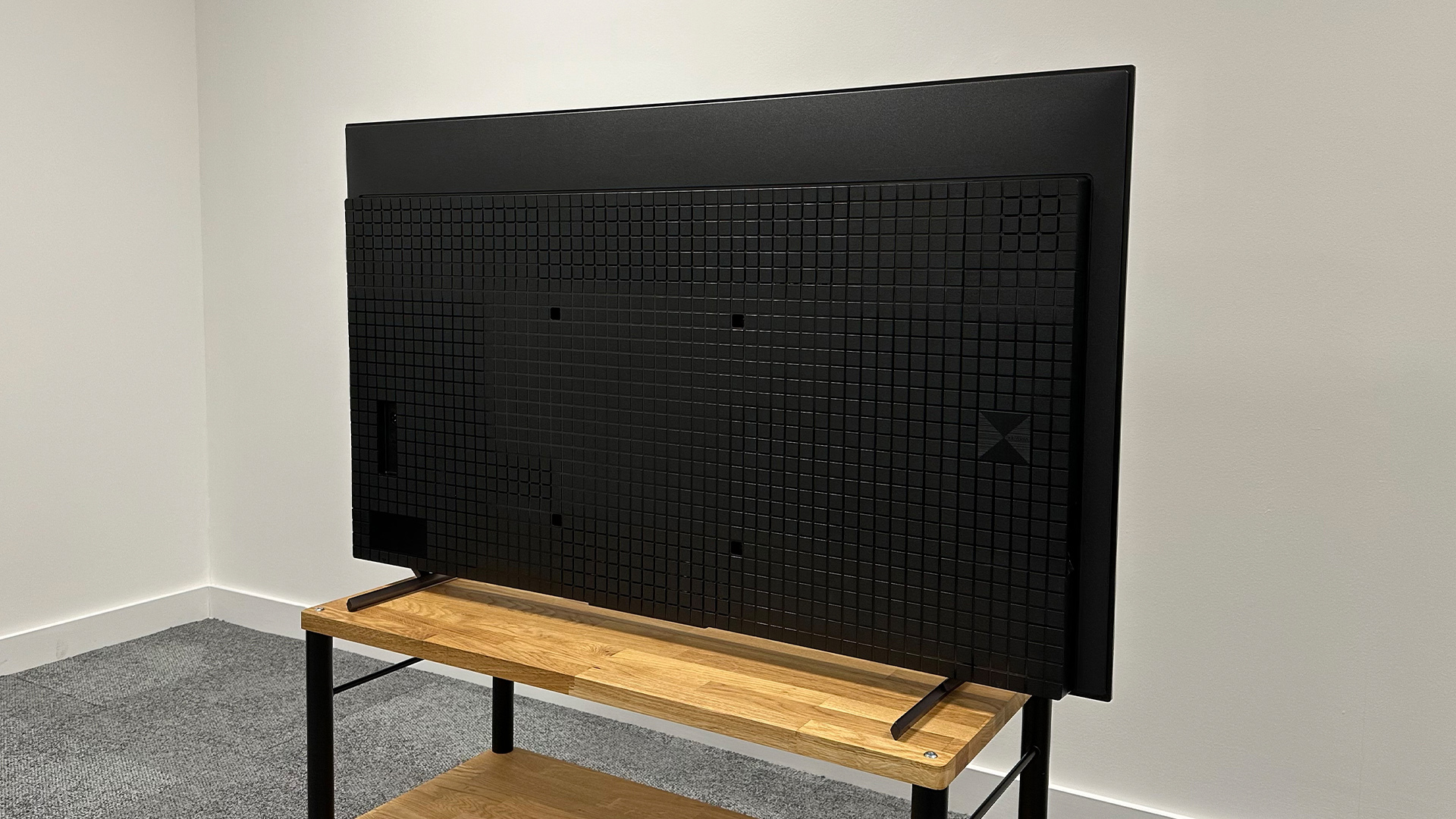
The A80L looks very similar to the A80K it replaces. That’s fine, but the minimalist design is beginning to look a bit bland.
As before, the set is just a touch thicker (5.3cm) than rivals such as the LG C3 (4.5cm), and it’s thicker over more of its rear, largely because it needs a larger enclosure to house the actuators that are placed behind and vibrate the whole panel in order to generate sound.
Rather than a pedestal stand, the A80L comes with feet that can be positioned either angled outwards or in. The set looks more stylish with them angled out from the set’s edges, but that gives the TV a footprint that will be too wide for a lot of furniture.
Turning them the other way solves that problem. There are also little extenders in the box that can be added to the feet in order to increase the amount of space between the TV’s bottom edge and the surface upon which it’s placed so that a soundbar can be accommodated.
Features
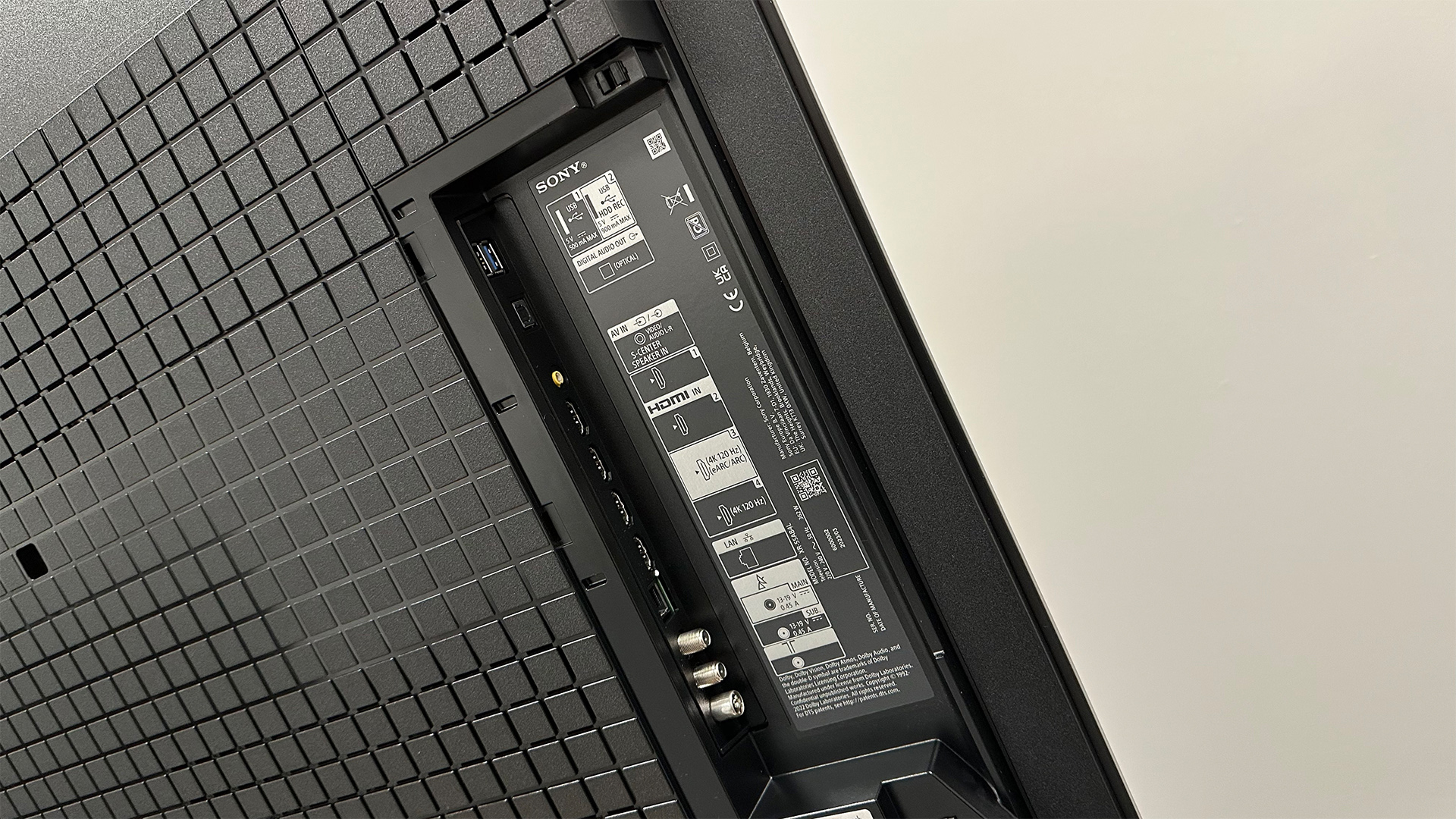
Sony is continuing with its Cognitive Processor XR as the brain of its premium TVs, and this has proved to be hugely capable in the past. This year, it gets a new XR Clear Image feature, which is intended to be a more intelligent form of upscaling that understands content type and quality and applies processing accordingly so that images look closer to native 4K.
The company is also sticking with the Google TV operating system, which is good and getting steadily better. The most recent version that the Sony uses is much better at presenting you with a personalised array of content to watch. Immediately after initial set-up, we’re presented with a homepage that has a heavy focus on sci-fi, thrillers and action films. There’s a good range of sources for this content, too, with Prime Video, Disney+, iPlayer and Apple TV all represented, but the continued lack of Netflix shows and movies in the selection remains a significant thorn in the curation engine’s side.
On the subject of streaming apps, every one that you could reasonably expect to be present, is, and they all support the video and sound formats that they should. The Disney app even finally delivers content in Dolby Atmos – something that it hasn’t done via the last couple of generations of Sony TVs. The A80L also features Sony’s exclusive Bravia Core app, which allows for the streaming of movies in much higher bit-rates, and therefore higher quality, than you get from other services. The TV comes with 10 credits that can be used to ‘purchase’ premium movies, plus 24 months of unlimited streaming of the general catalogue.
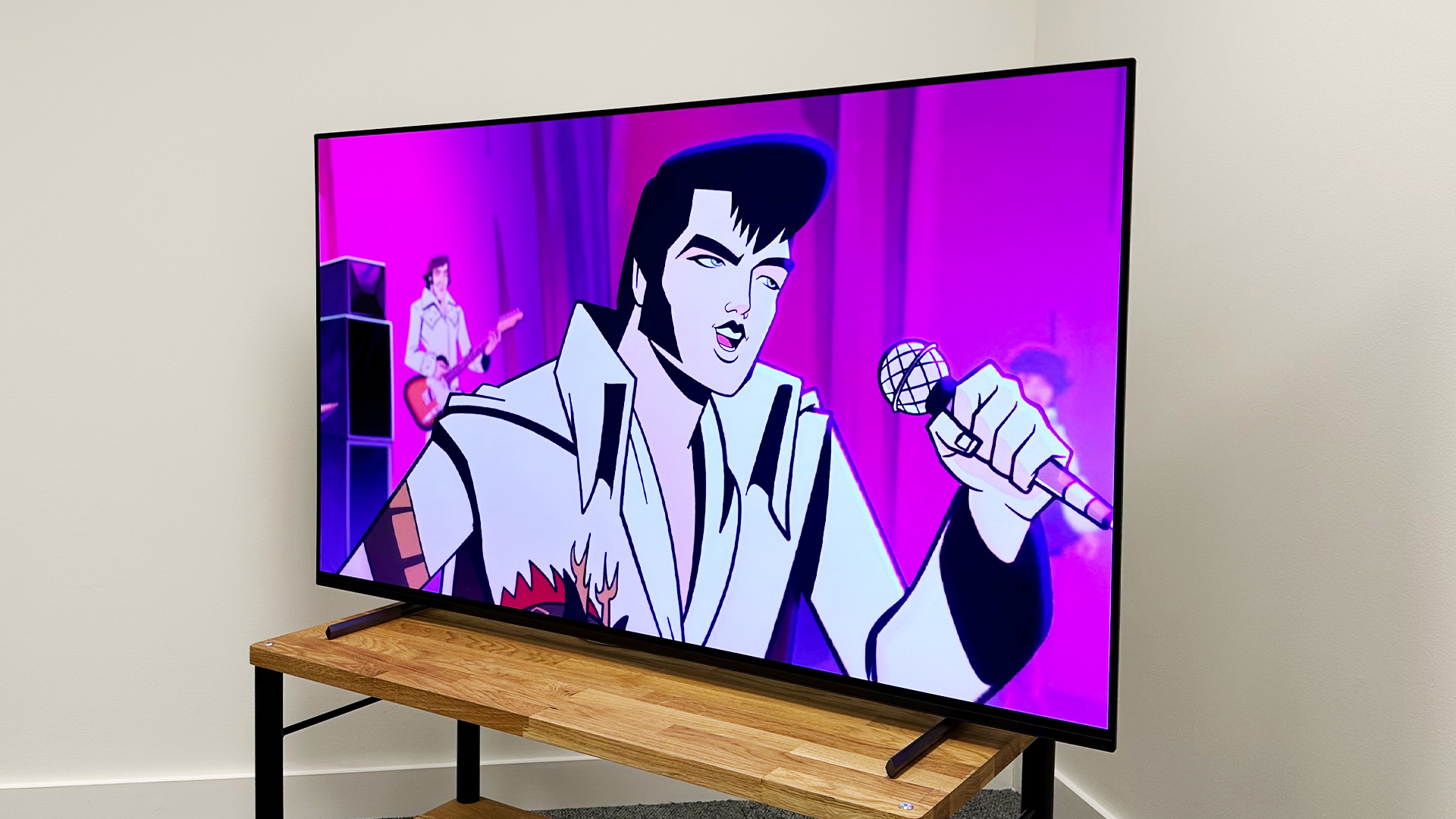
Screen size 55 inches (also available in 65in, 77in, 83in)
Type OLED
Backlight N/A
Resolution 4K
HDR formats HLG, HDR10, Dolby Vision
Operating system Google TV
HDMI inputs x 4 (2 x 48Gbps HDMI 2.1)
Gaming features 4K/120Hz, VRR, ALLM
ARC/eARC eARC
Optical output? Yes
Dimensions (hwd, without stand) 71 x 123 x 5.3cm
As well as the Dolby Atmos sound format, the A80L also supports Dolby Vision HDR alongside the more common HDR10 and HLG formats. As ever with Sony, HDR10+ is not supported, though we don’t see that as anything to be too sad about.
More disappointing is the fact that the A80L still has just two HDMI 2.1 sockets, with the other two having the older 2.0 specification. As before, one of those 2.1 sockets is also responsible for handling eARC duties, so if you use that to output audio to a soundbar or AVR, you’ll have just one left for a PS5, Xbox Series X or PC. That one will be enough for many people, but perhaps not for hardcore gamers, and there’s also the possibility of more HDMI 2.1 sources appearing during your ownership of the TV.
The two HDMI sockets that are present do at least support all of the next-gen gaming features that they should, including 4K/120Hz, VRR and ALLM. The A80L is also designated ‘Perfect for PlayStation’, which means it will automatically calibrate HDR tone-mapping for games when connected to a PS5, though we do recommend that you manually check the settings it applies.
Sony has also finally joined its rivals in offering a dedicated menu for quick access to gaming-related settings. The ingeniously named ‘Game Menu’ includes options for reducing motion blur, adjusting black depth and detail, and adding a crosshair to the centre of the screen. Sony has confirmed that the 'Screen Size' option, which allows you to reduce the size of the window that you use for gaming so that you can keep abreast of all of the action without having to move your eyes so much, will be exclusive to the upcoming A95L QD-OLED.
Picture
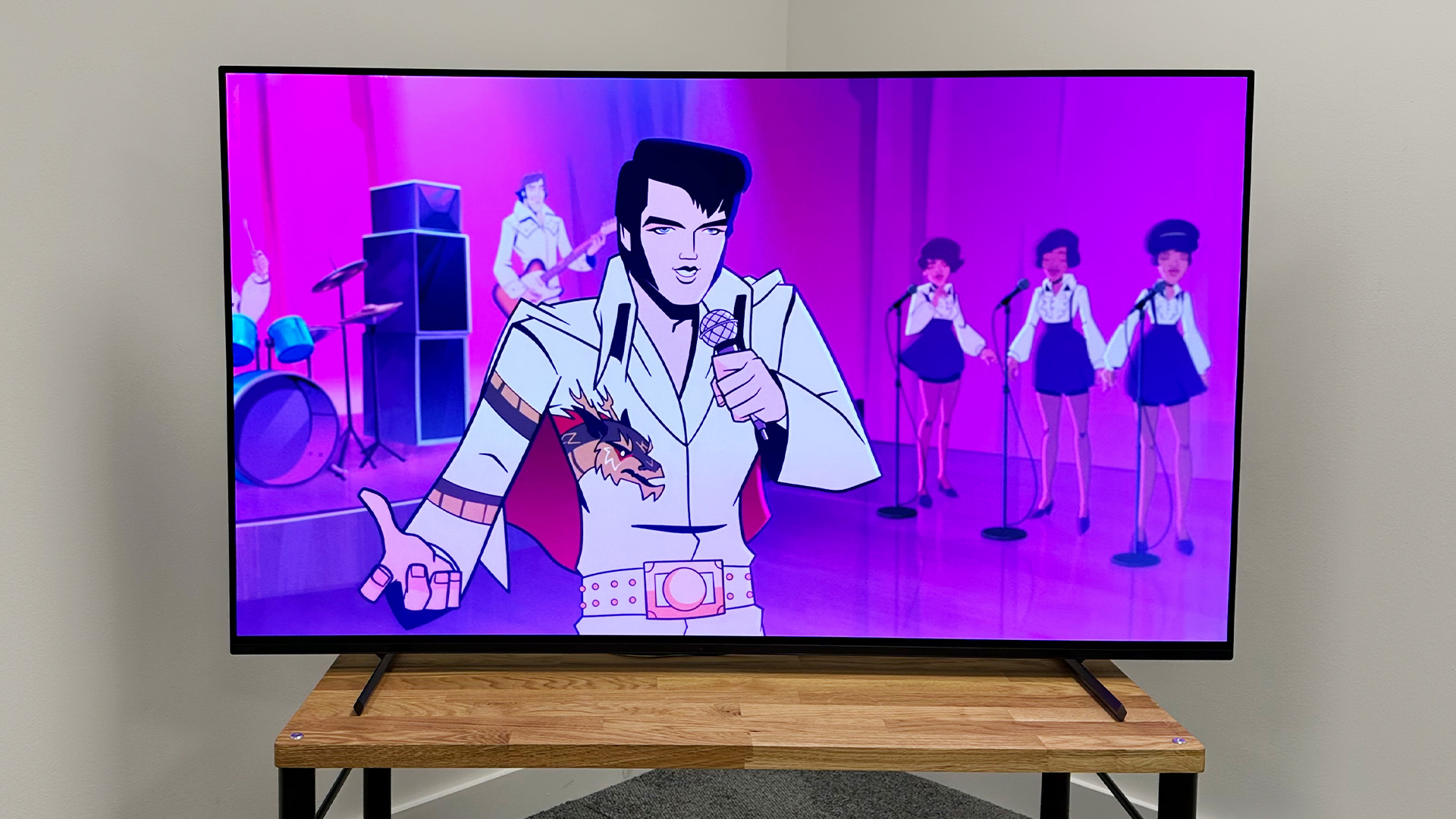
Starting with HDR10, the Sony A80L takes no time at all to seriously impress us. The least processed and most cinematically authentic picture preset, Custom, is beautifully balanced. The seemingly effortless way it combines the spectacular with the subtle is quite extraordinary. The neon lights and holographic billboards of Blade Runner 2049’s downtown LA pop from the overall gloom of the city in brilliant fashion, but skin tones are handled with realism-boosting nuance and the seemingly hundreds of slightly different shades of grey that make up the bark of the tree at Sapper Morton’s farm are made clear to see.
The TV’s ability to subtly recreate different shades doesn’t come at the expense of dynamism, and contrast extremes such as the intro text at the start of the film emerge brightly from the pure black background. There’s a rare purity to highlights, too, such as Love’s white jacket and the light panels above her head in the records room of the Wallace Corporation.
All of these qualities combine to make an image that’s brilliantly solid and has a lovely three-dimensional feel. The solar fields at the film's opening and the rubbish-dumping zones outside the city seem to go on forever. Characters and objects, meanwhile, stand out beautifully, too, drawing the eye precisely where they should. The motion processing helps here, too, as Sony’s excellence in this area allows you to apply more smoothing and sharpening than you can with other TVs without unpleasant shimmer or the soap opera effect being added.
On top of all of this, detail is also outstanding, with clothing textures, skin imperfections and complex patterns all rendered crisply but without artificial definition. This impressive ability to resolve fine details is consistent through the light spectrum – the amount of shadow detail is excellent, but perhaps more impressive is the set’s ability to dig up details in the brightest parts of the picture, revealing, for example, the grime on a window through which light is pouring.
Switching to Top Gun: Maverick in Dolby Vision, we find that the theoretically most accurate Dolby Vision Dark mode looks a little bit dull, even in a pitch-black room, just as it did with last year’s Sony OLEDs. The face of a character looking towards the camera while sun streams in through the window behind him is almost completely obscured by shadow, and the bright skies and sunsets of the desert airbase look somewhat overcast.
Dolby Vision Bright is beautiful, though. Oodles of punch from the bright, pure whites and vibrant colours, lovely warmth to skin tones, absolutely bags of detail and razor-sharp edges, all without there being any suggestion of exaggeration. As with the HDR10 performance, it’s this balance between the spectacular and the subtle that makes the A80L such a pleasure to watch.
All through our testing, every HDR movie we watch – It, The Batman, Raiders Of The Lost Ark, Dune, Casino Royale and much more besides – benefits in the same way. The performance is thrilling, but not in a way that distracts from the content of the movie or TV show. That’s precisely how it should be.
Shadow detail is great, too, and while the A80L is clearly capable of delivering perfect blacks, it doesn’t use this ability to increase impact at the expense of detail in the way that some rivals do. This allows you to see all of the creepy detail that you’re supposed to in the basement at the start of It without any scares being spoiled by over-brightening.
While predictably less spectacular with SDR content, the A80L’s balance remains a key strength. Colours are warm but authentic, highlights are bright and clean, and contrast overall is excellent. Playing Another Round in HD from Apple TV, the Sony suppresses the picture noise that some rivals exaggerate, and without eradicating the intentional film grain. The quality of the TV’s upscaling ensures that the picture is sharp and detailed without the clever processing involved being visible.
Our only complaint about the SDR performance is that in all three of the more authentic picture modes – Custom, IMAX Enhanced and Cinema – there’s a bit of black crush that means some dark detail is missing. This can be compensated for by adjusting the Black Level setting, but it’s hard to find an ideal balance between black depth and shadow detail and it’s a shame that all three presets are flawed in the same way.
Sound
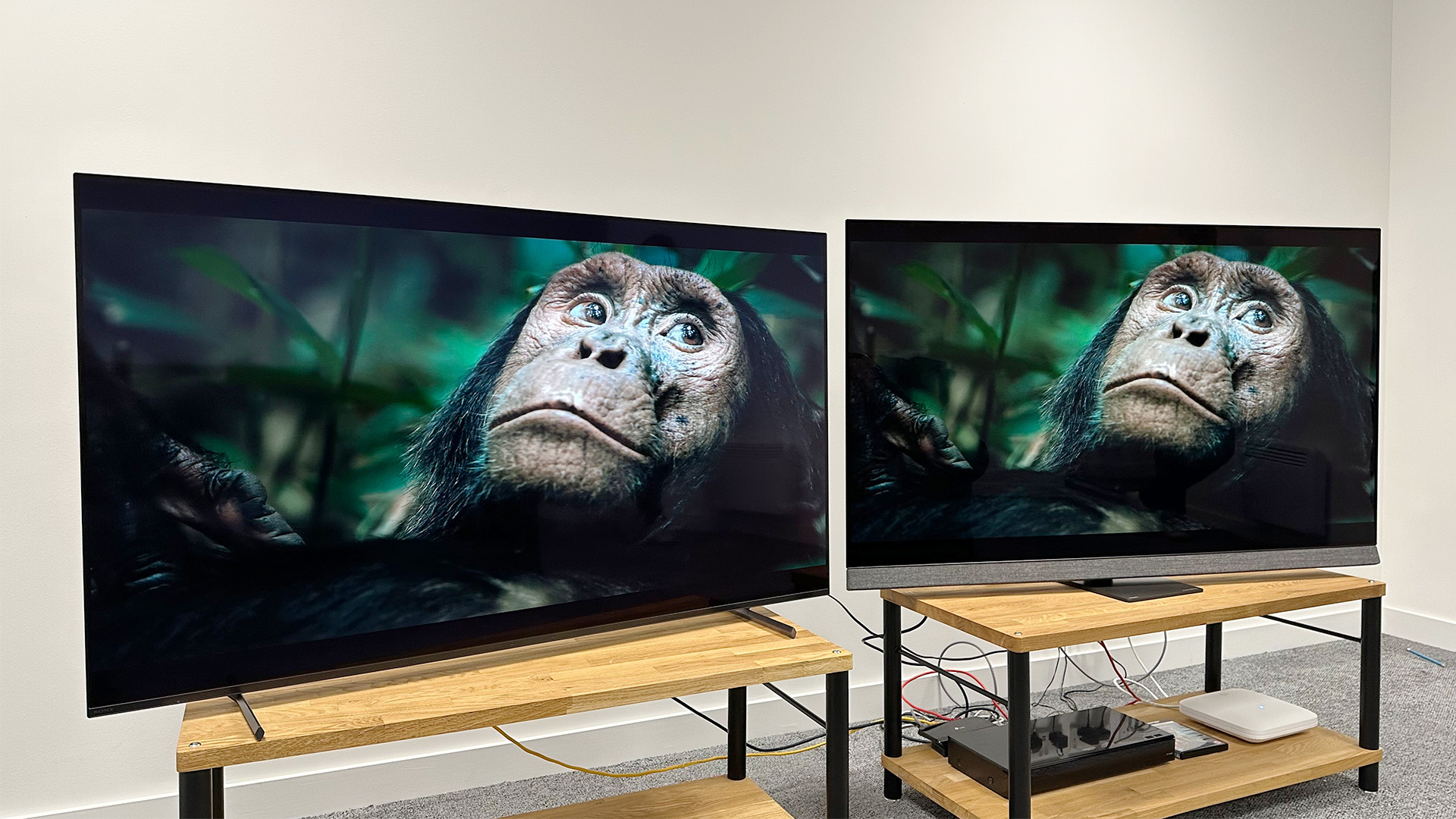
As mentioned, the A80L, like all Sony OLEDs of the modern era, features an actuator-based audio system that involves the whole panel being vibrated in order to create sound. The key advantage of this approach is that the sound literally comes from the screen, so there’s no disjointedness between the audio and image. In the case of the A80L, there are three of these screen-vibrating actuators and two regular woofers, which are there to fill out the sound.
Starting with our usual audio stress test, chapter two of Blade Runner 2049, we immediately notice that the A80L is a bit bass-light. The super-deep drum beats are disappointingly lightweight, failing to reach the lower frequencies of some other TVs at this price. That’s obviously a slight shame, but it may be an intentional design decision – unlike many of those other TVs, which strive for depth they can’t comfortably reach and distort as a result, the A80L is fairly composed, with only a minor bit of fuzz appearing at very high volumes. There’s something to be said for knowing one’s limits.
And, that slight lack of bass depth aside, the A80L sounds really rather good by TV standards. Put it in the Cinema sound mode and the spaciousness of the delivery is very impressive. The whole soundstage extends far beyond the confines of the screen, which helps enormously in the recreation of the atmosphere in the various spaces of the movie, from K’s apartment to the echoey halls of the Wallace Corporation. Yet this atmosphere and spaciousness combines with the sort of focus that can really only come from having the sound literally coming from the screen.
There’s decent projection into the room by TV standards, too, and while bass isn’t super-deep, the lower midrange is very nicely judged and helps reproduce voices with authentic warmth.
All told, while flagship sets with discrete speaker systems will sound even better, for a step-down model the A80L sounds very impressive. This should be a strong consideration for anyone with this sort of budget who is determined not to combine their new TV with a dedicated sound system.
Verdict
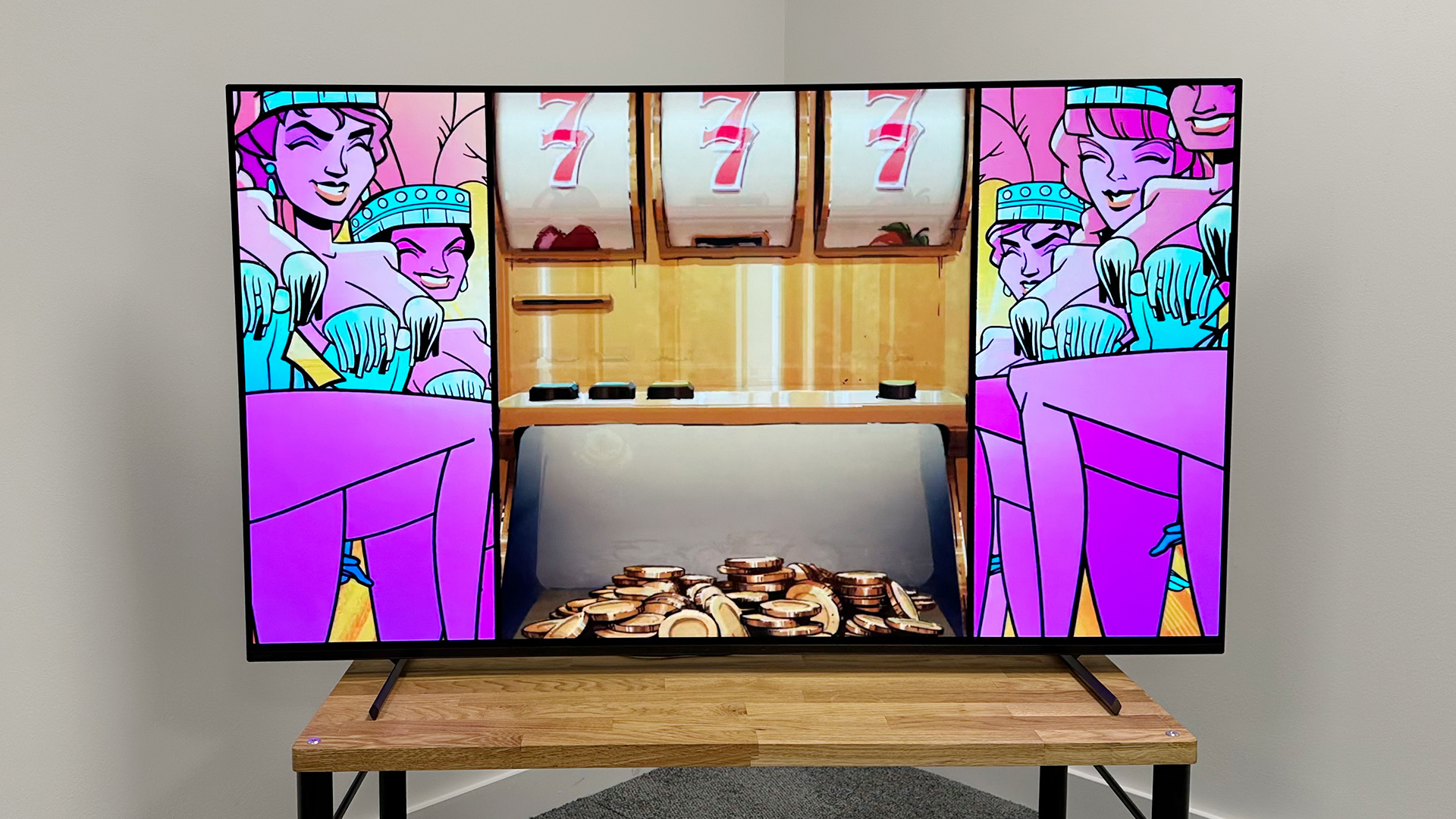
In case it isn’t abundantly clear by now, the Sony A80L is a really good TV. It’s natural that we’re all drawn to the shiny promise of the super-bright new MLA and QD-OLED panel technologies, but the A80L proves that with impeccable processing, truly exceptional picture quality is still more than possible from a ‘standard’ OLED panel.
This is a TV that combines the spectacular with cinematic subtlety in very rare fashion. It thrills, but not in a way that’s even slightly showy. And it combines that with surprisingly atmospheric and engaging sound, though we would still, as ever, recommend a dedicated sound system if you’re serious about home cinema.
Our only concern for the A80L is its price. It justifies being more expensive than other standard OLED TVs with the quality of its performance – but Sonys are typically discounted far less than their rivals, and if the gap between this model and the likes of the LG C3 expands, it might become hard to justify the extra expense.
That’s a conundrum for another time, though. Right now, the Sony A80L is an all-rounder that’s very hard to resist.
SCORES
- Picture 5
- Sound 4
- Features 4
MORE:
Read our LG OLED65G3 review
Also consider reading our LG OLED65C2 review
Want another option? How about our Philips 55OLED907 review
Our pick of the best OLED TVs we've tested







